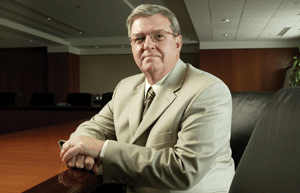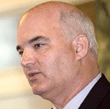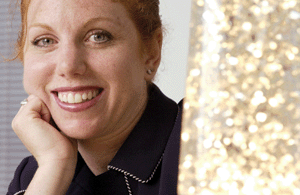The Transportation Security Administration, having weathered a rough start in providing security to the nation's airports, is now turning its attention to seaports, railroads, highways and mass transit systems.Created just two months after the Sept. 11, 2001, terrorist attacks in New York and Washington, TSA initially came under heavy criticism from Congress and airline travelers. Congress complained that the agency's rollout of airport security ran hundreds of millions of dollars over budget, while travelers complained about long delays at the airports.Despite several high-profile gaffes, such as hiring illegal aliens and people with criminal records as airport screeners, the agency has made major strides in improving security at the nation's 429 commercial airports.More than 350 airports have reconfigured their screening areas to accommodate new equipment and procedures. Most airports now have explosion detection systems to examine checked baggage. Airport screeners, all TSA employees now, have found thousands of banned items, including a handgun hidden inside a child's teddy bear. And most important, there hasn't been a single hijacking, or even an attempt, since the new security measures were put in place."American travelers feel more confident, and they have every reason to feel so," said retired Adm. James Loy, TSA administrator, in a written response to questions from As a result of TSA's efforts, other nations "are looking to model what TSA is doing here," said Greg Baroni, president of Unisys Global Public Sector. Unisys Corp. holds the $1 billion Information Technology Managed Services contract, awarded by TSA in August 2002, to build the agency's IT infrastructure.While TSA is still working to improve airport security, Loy said "in the coming months the organization will be focusing more on security at seaports, highways, railroads and mass transit systems."[IMGCAP(2)]Verifying the security of the containers carried into and across the nation is one of the major tasks the agency faces. According to statistics compiled by the Homeland Security Department, more than 21,000 cargo containers arrive at U.S. seaports every day. That adds up to more than 7 million every year. Steve Coleman, a spokesman for the Port Authority of New York and New Jersey, said that in 2002, its docks handled 3.7 million "20-foot equivalents," a standard shipping container being 20 feet long.Loy said TSA already has awarded more than $425 million in grants to improve security at ports nationwide and to track cargo around the globe. TSA also is working to develop a National Transportation System Security plan that will identify vulnerabilities and help the agency decide how to allocate its resources."This plan will give TSA a comprehensive nationwide strategic plan to address security across all modes of transportation," Loy said. FAST, STUMBLING STARTWhen Congress created TSA in November 2001, it transferred responsibility for aviation security from the airlines to the new agency -- and gave TSA just one year to get new federal security employees in place. The agency managed to make its deadline, hiring, training and putting 60,000 people on the job. But the process was neither easy nor cost-effective.Part of the problem was that Congress significantly underestimated the number of screeners needed and the difficulty of filling the positions so rapidly. The hiring program's cost, originally set at $104 million and awarded to Pearson Government Solutions, a unit of Pearson plc, a U.K. firm, skyrocketed to an estimated $700 million, according to the General Accounting Office. Congress has grilled Loy repeatedly about why background checks have not been completed on hundreds of screeners amid reports they are stealing money and valuables from travelers' bags. And lawmakers have been asking why the agency set up hiring centers in expensive locales such as Telluride, the Colorado ski resort.Loy described the agency's efforts to meet the deadlines for screening all passengers and checked baggage as "the largest single civilian government mobilization since World War II." He also said the agency will spend much of this year trying to eliminate problems and perfect the system that was put into place."When you do something so big and so fast, like radically improving aviation security, there are bound to be things you need to give a second look," he said.TSA's plan to pay more attention to other modes of transportation is applauded by many in industry. Some believe that TSA devoted too much of its resources to airport security."We're spending an enormous amount of money making our airports safer, knowing full well we can never make them impenetrable," said Michael Hershman, president and chief executive officer of the Civitas Group, a newly formed consulting company for homeland security issues. "We're assuming that the people out to hurt us are going to use that method again, and I'm not sure I agree with that assessment." The nation's ports represent "a greater vulnerability and higher risk," he said. Using technology may be the only way to strengthen security at the docks, Hershman said, because the volume of goods coming in is so high that it's not feasible to rely on human inspection. SAFER TRAVELSTSA is moving to address some of the vulnerabilities that have Hershman and others worried. In June, the agency awarded grants worth $170 million to 199 state and local government and private companies for security planning and projects to strengthen dockside and perimeter security. At the same time, TSA's parent agency, the Homeland Security Department, provided $75 million in grants for infrastructure security measures, such as training, equipment, exercises, planning and information sharing.Homeland Security also is providing $58 million for Operation Safe Commerce, a pilot program to bring together private business, ports and federal, state and local officials to analyze security procedures for cargo entering the country. The Port Authority of New York and New Jersey, the Seattle-Tacoma seaport and the port in Long Beach, Calif., are participating in the project.Innovative Logistics Techniques Inc. of McLean, Va., just received $3.7 million in grants through Operation Safe Commerce to demonstrate improved security techniques at ports in New York and New Jersey as well as in Seattle and Tacoma.[IMGCAP(3)]The company will use IT to screen cargo manifests, data on countries of origin and other facts to help identify suspect cargos. This will free up customs agents to concentrate on "bad guys and the unknown guys, as opposed to the known and trusted," said Jerry Woolever, senior vice president for operations at Innolog, as the logistics company is known. Such systems can provide benefits beyond improved security because they enable all stakeholders in the supply chain to pinpoint the location of their goods at any given time, he said. These additional efficiencies possibly could offset increased security costs."The maritime industry is operating so close to the margin, it can't afford a lot of expenses," Woolever said.TSA also is taking its first steps toward establishing a transportation worker identification credential, known as TWIC. The agency is sponsoring a technology evaluation pilot program at the Los Angeles and Philadelphia airports. In April, the agency awarded a $3.8 million contract to Maximus Inc. of Reston, Va., to evaluate technologies used for the biometric cards. Electronic Data Systems Corp. is a major subcontractor on the project. [See story, page 33.]For TSA's fiscal 2004 budget, the House has approved $5.2 billion. The Senate is voting on a similar measure that includes $5.4 billion, including $1.8 billion is for passenger screening, $150 million for port security grants and $50 million for the TWIC program.Loy said a significant portion of TSA grants are going to research and development of technologies, including a system to alert airlines when a known terrorist attempts to purchase a ticket and initiatives to protect cargo coming into the United States. These new technologies and products "will allow law enforcement at all levels to stay one step ahead of terrorists," he said. EXPANDING INFRASTRUCTURETSA's Information Technology Managed Services contract is probably one of the most visible government IT projects. Prime contractor Unisys of Blue Bell, Pa., has been tasked to build the agency's IT infrastructure almost from scratch. Subcontractors on the program include many of industry's leading integrators and service providers, such as Anteon International Corp., AT&T Corp., CACI International Inc., Computer Sciences Corp., IBM Corp., BearingPoint Inc., Northrop Grumman Corp., PEC Solutions Inc., RS Information Systems Inc., Science Applications International Corp. and SRA International Inc.Pat Schambach, TSA's chief information officer, said the 19-month-old agency continues to build the basic IT infrastructure that most agencies take for granted. For example, while the agency has basic desktop technology, phone systems, local area networks and networking capabilities at its headquarters, it has limited IT capabilities at remote offices at more than 400 airports."One of our top priorities is to provide protected LAN/WAN high-speed connectivity to our Federal Security Directors' offices and airports," Schambach said in written answers to This, he said, would provide these locations with enhanced connectivity to e-mail, intranet services and the Internet. Schambach also said the agency in 2004 will begin to install enhanced telephone systems at its remote locations using voice-over-IP technology, and will begin implementing video security at airports "if we receive the appropriate funding levels." Unisys, which has more than 100 teammates on its infrastructure contract, continues to sign up new companies as specific needs are identified, company officials said. Training programs for screeners, pilots and other workers in aviation are ongoing, they said.Technology companies that are helping TSA can use their experience as platforms for additional work, both in the United States and abroad.For example, representatives from about six nations, including the Canadian Air Transport Security Authority, have visited the Unisys "center of excellence" demonstration facility in downtown Washington. The company's high-profile TSA contract makes it a logical stopping place for other countries wanting to emulate the TSA model."Obviously, it positions us in a very favorable light in terms of becoming one of their contractors," Unisys' Baroni said. Staff Writer Patience Wait can be reached at pwait@postnewsweektech.com.XXXSPLITXXX-When Unisys Corp. last year won a $1 billion task order to build the IT infrastructure for the Transportation Security Administration, it turned to software from Micromuse Inc. to get the big picture of how these networks are running.The company's Netcool Service Level Agreement Manager monitors network devices such as routers, switches and servers to ensure they are up and running. By aggregating these operational conditions, the software provides a dashboard-style display for managers to keep track of the networks. The software also calculates how well networks and services are performing relative to service-level agreements.The software is useful for both Unisys and the TSA, said Jay Chapel, an account manager for San Francisco-based Micromuse.For Unisys of Blue Bell, Pa., Netcool allows program managers to get a good handle on how well the systems are performing. Since payment on the TSA contract is based partially on achieving certain performance metrics, Unisys needs to monitor closely how well its systems are running, Chapel said. Each subcontractor to Unisys may have its own network management tool, such as IBM Corp.'s Tivoli, Hewlett-Packard Corp.'s OpenView and BMC Software Inc.'s Patrol. Netcool can poll these sources to ensure the networks are running to specified standards. "At the end of the day, Unisys needs a single pane of glass to glue all that information together," Chapel said.Netcool also can give Pat Schambach, TSA's chief information officer, a graphical overview of how agency networks are performing. According to Chapel, the TSA task order required a software-based service-level agreement manager. "On a regular basis, [TSA] must show Unisys how well it is meeting key metrics," Chapel said. Founded in 1989, Micromuse employs 550 people, and reported $139 million in revenue for 2002. In addition to Unisys, others using Micromuse products are Electronic Data Systems Corp. for the Navy-Marine Corps Intranet, and Computer Sciences Corp. for the FBI's Trilogy modernization contract. The information technology division of Northrop Grumman Corp. resells Micromuse products. Cisco Systems Inc. also resells Netcool under its own brand name, Cisco Information Center. Unisys uses the Cisco-branded Netcool for the TSA work. Marva Bailer, who is head of federal sales for Micromuse, said one of the strongest selling points of the software is that it can be set up to watch a full-scale system in a matter of days. As a result, integrators can conduct a demonstration for program managers to get an idea of how to modernize their operational centers. "Instead of a blank slate, they have something they can look at," Bailer said. Overall, this sort of wide-view of an agency's networks is becoming more pervasive. "We're seeing programs in the Department of Defense and some of the civil agencies that have the need to view the whole agency, whereas before they did not have those goals," Bailer said. Netcool starts at about $43,000 per copy, Chapel said.? Joab Jackson
Jerry Woolever of Innolog said security systems the company is providing to TSA will free up customs agents to concentrate on "bad guys and the unknown guys, as opposed to the known and trusted."
Henrik G. de Gyor
As a result of TSA's efforts, other nations "are looking to model what TSA is doing here," said Greg Baroni of Unisys Corp., which holds a $1 billion contract to build the agency's IT infrastructure.
Laurie DeWitt
"One of our top priorities is to provide protected LAN/WAN high-speed connectivity to our Federal Security Directors' offices and airports." ? Pat Schambach, TSA CIO
Henrik G. de Gyor
Marva Bailer, head of federal sales for Micromuse, said the company's Netcool system allows integrators to demonstrate how an agency's systems can be modernized. "Instead of a blank slate, they have something they can look at," she said.
Henrik G. de Gyor






